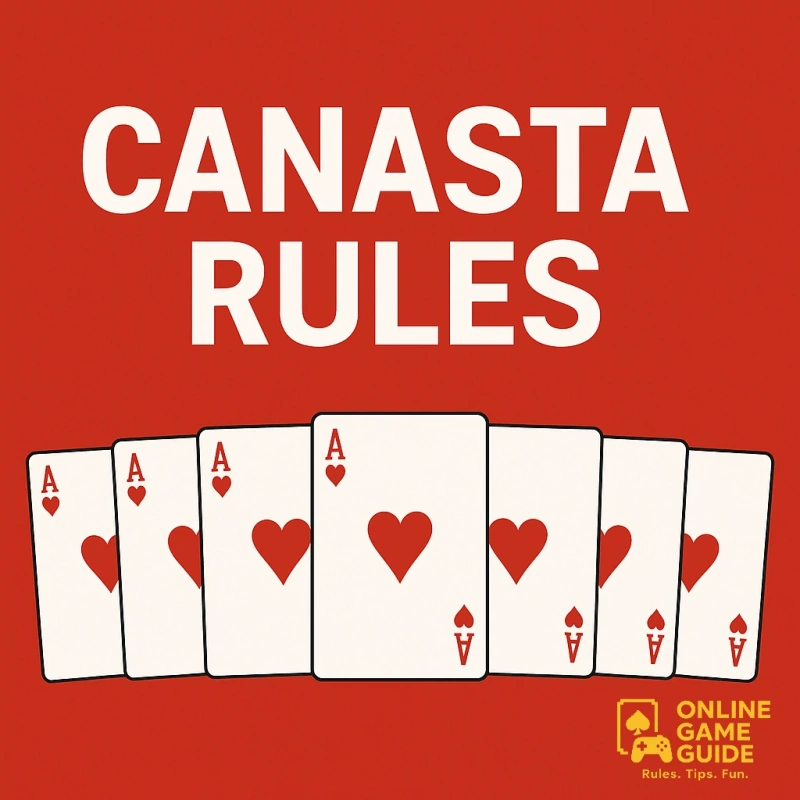
Canasta is a classic card game with a rich legacy, one that evokes memories of smoky parlors, porcelain teacups, and intense glances over red and black cards. As part of the Rummy family, it became wildly popular in the 1950s and has since remained a favorite among traditional card players and strategy lovers alike. Whether you're dusting off an old deck or picking it up for the first time, understanding the canasta rules is essential to fully enjoy the game.
A Game With History
Canasta, which means "basket" in Spanish, originated in Uruguay in the 1940s. It was created by Segundo Santos and Alberto Serrato, who wanted a game that combined the best elements of bridge and rummy. Their invention spread like wildfire throughout South America and was soon embraced in North America and Europe.
What You’ll Learn in This Guide
This article will cover every aspect of Canasta: from the basics of card values to advanced strategy tips, from team dynamics to scoring breakdowns. Whether you’re brand new or brushing up on your skills, this is your complete guide to all the canasta rules you need to know.
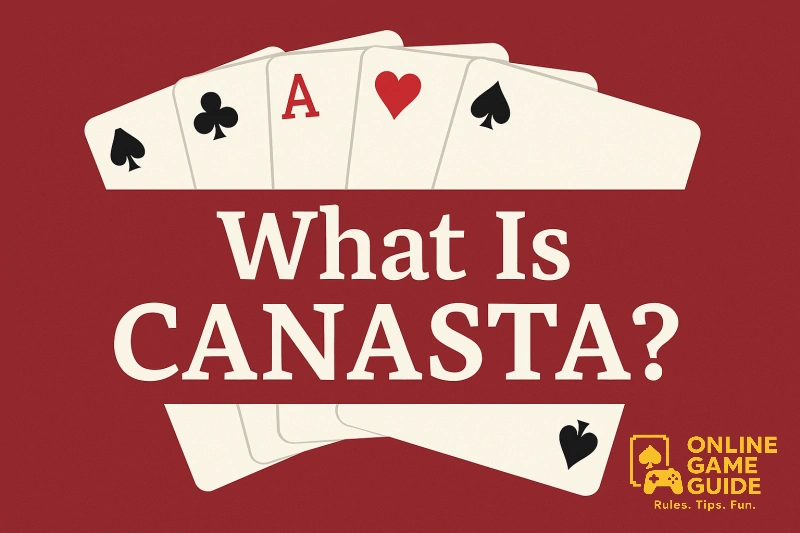
What Is Canasta?
Canasta is a thrilling card game that blends strategy, memory, and a pinch of audacity. As a proud member of the Rummy family, Canasta has stood the test of time, enchanting players since its creation in the 1940s. While many card games fade into obscurity, Canasta remains a beloved classic, especially among fans of more tactical gameplay. Understanding canasta rules unlocks a world of calculated risks and satisfying victories.
Why Canasta Stood Out
Unlike simpler games like Go Fish or even classic Rummy, Canasta introduced new concepts that made it more challenging and engaging:
- Team play: Usually played in pairs, Canasta encourages coordination and communication.
- Special card roles: Jokers and twos become wild cards, while red threes act as bonus cards with special effects.
- Frozen discard pile: Strategic timing and observation are crucial when deciding whether or not to grab the discard pile.
- Clean vs. dirty canasta: Creating a canasta (seven cards of the same rank) is key, but whether it's clean (no wilds) or dirty (with wilds) changes the scoring.
These unique features set it apart from traditional Rummy, giving Canasta a flavor all its own. To enjoy the full experience, it's essential to become familiar with the full range of canasta rules.
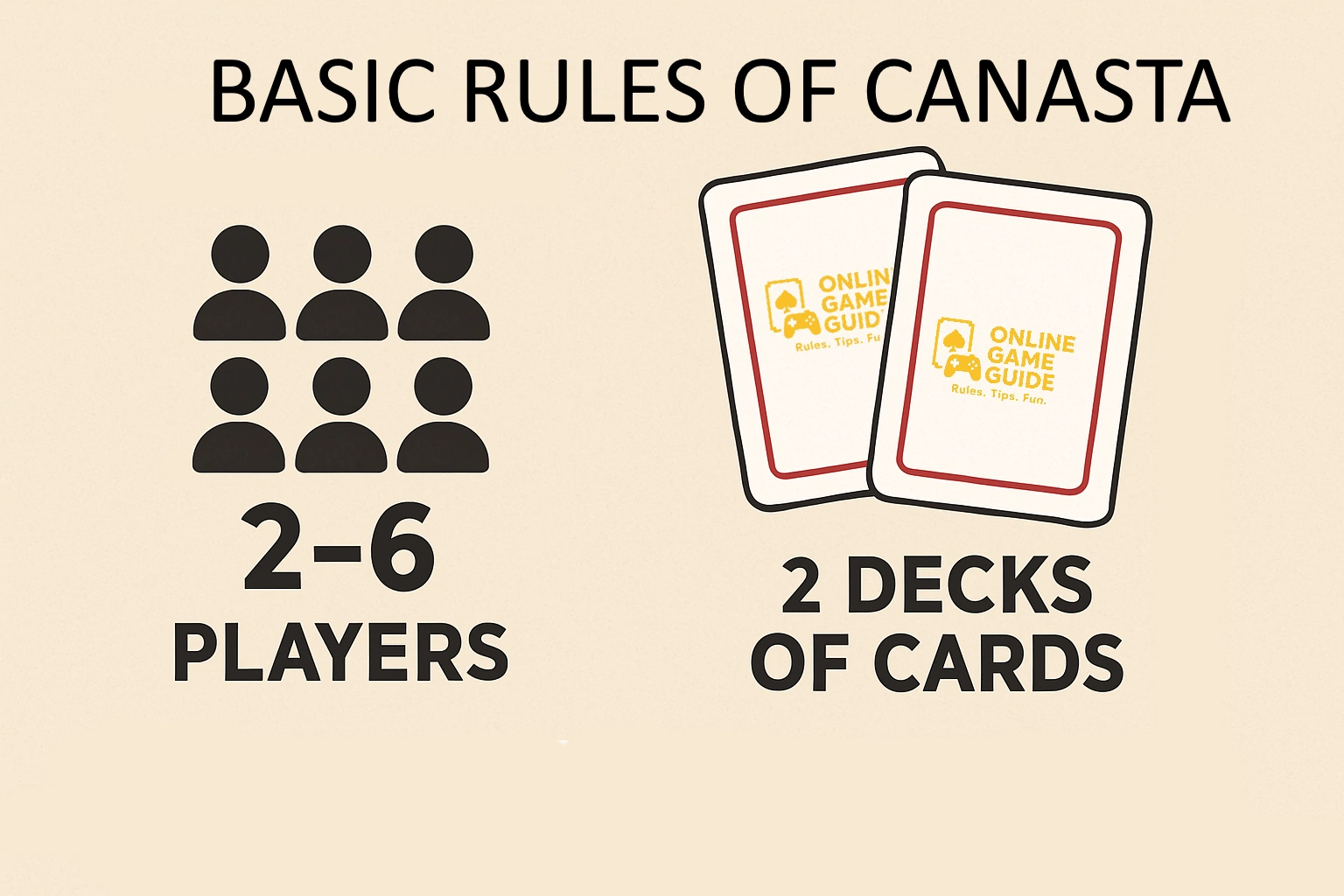
Basic Canasta Rules Overview
Before diving into strategy and advanced techniques, every player must understand the foundational mechanics that define the game. This section outlines the basic canasta rules — from the number of players and deck setup to the ultimate goal of the game. Whether you're playing socially or competitively, mastering these core rules is your first step toward canasta greatness.
How Many Players Can Play Canasta?
Canasta can be played with 2 to 6 players, but the most traditional and widely enjoyed format is a four-player game in two partnerships. In this format, players sit opposite their partner and work together to build melds and accumulate points. Variations exist for 2 or 3 players, but all follow the same canasta rules at their core.
The Cards and Deck Setup
Canasta uses two standard 52-card decks plus four jokers, making a total of 108 cards. The game treats jokers and all twos as wild cards, giving them a special role in forming melds and canasta.
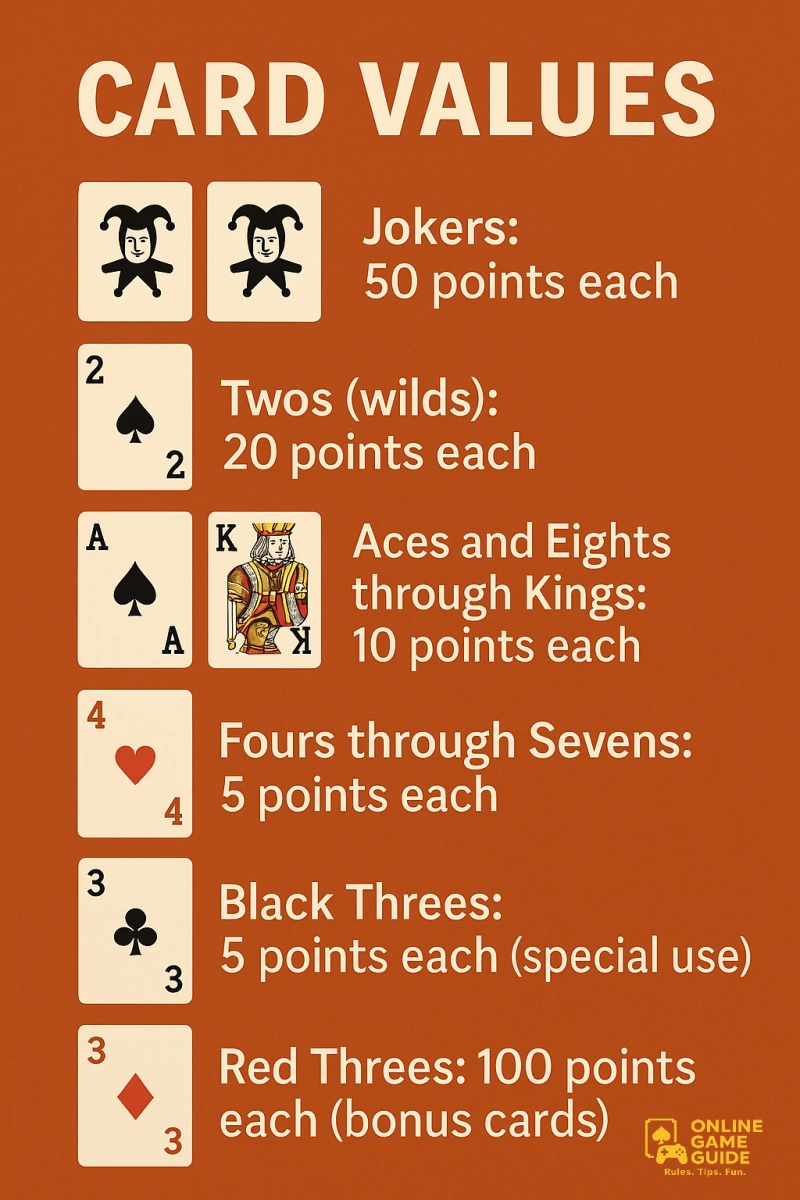
Card Values
- Jokers: 50 points each
- Twos (wilds): 20 points each
- Aces and Eights through Kings: 10 points each
- Fours through Sevens: 5 points each
- Black Threes: 5 points each (special use)
- Red Threes: 100 points each (bonus cards)
Understanding the value of each card is critical when calculating meld totals and tracking your score during and after each round — another pillar of the canasta rules.
The Objective of the Game
The main goal in Canasta is to form valid melds — combinations of three or more cards of the same rank — and to complete at least one canasta (a meld of seven or more cards of the same rank) before "going out" and ending the round. Players accumulate points over multiple rounds, aiming to reach a winning threshold (commonly 5,000 points).
Turn Structure
Each turn in Canasta consists of three phases:
- Drawing a card from the deck or picking up the discard pile (under certain conditions)
- Making melds or adding to existing ones
- Discarding a card to end your turn
These steps repeat in clockwise order until a player or team goes out, triggering the scoring phase. The canasta rules emphasize careful timing — when to meld, when to hold, and when to make the final move.
Wild Cards and Meld Limits
Melds can include wild cards (jokers and twos), but they must follow strict limits: you can’t have more wild cards than natural cards in any meld. This constraint keeps the game balanced and is one of the essential canasta rules that prevents easy stacking of high-point cards without effort.
By internalizing these core mechanics — player count, deck setup, scoring values, and melding structure — you're well on your way to playing Canasta the way it was meant to be played: with precision, partnership, and a deep respect for the rules. The elegance of the canasta rules lies in their simplicity, but don’t be fooled — mastering them is the start of a lifelong rivalry at the card table.

Gameplay Explained Step-by-Step
Once the setup is complete and the cards are dealt, the game of Canasta truly begins. This phase is where tactics, memory, and clever card play come into focus. Whether you’re a first-time player or brushing up on the fundamentals, this step-by-step breakdown will guide you through the flow of play according to standard canasta rules.
Step 1: Drawing Cards
At the beginning of each turn, a player draws one card from the draw pile — or, under specific conditions, they may pick up the entire discard pile. This choice can be strategic, especially when the discard pile contains valuable cards that can form melds or complete a canasta.
Picking Up the Discard Pile
According to canasta rules, a player may only pick up the discard pile if they can immediately use the top card to form a valid meld using at least two natural cards of the same rank from their hand. If the discard pile is “frozen” (i.e., a wild card or red three is on top), the player must meet stricter conditions — they must use two natural cards in hand matching the top card, not just one.
Step 2: Creating Melds
Once the draw is complete, players may choose to lay down melds. A meld is a group of three or more cards of the same rank — for example, three kings or four nines. Melds can include wild cards, but never more wild cards than natural ones. This rule is central to balancing the game and is emphasized in most versions of the canasta rules.
Point Values of Melds
- 3 or more of the same rank = valid meld
- Maximum 3 wild cards per meld
- Wild cards cannot exceed the number of natural cards
Once melds are laid down, players can add to them on future turns. Partners may also contribute to each other's melds, making teamwork a vital component of advanced play. Remember, forming at least one canasta — a meld of seven or more cards — is required before going out.
Step 3: Discarding
To end their turn, the player must discard one card onto the discard pile. If a black three is discarded, it effectively “blocks” the pile, preventing the next player from picking it up unless they meet specific conditions. This mechanic adds an extra layer of depth to the canasta rules and can be used both defensively and offensively.
Going Out
A player can “go out” — ending the round — if they have formed at least one canasta and have no cards left in hand after discarding. Before going out, the player may consult with their partner (in team games) to confirm it’s a good time. Going out at the wrong moment could leave valuable points unscored.
Round Flow Recap
Each round of Canasta follows a clear and satisfying rhythm:
- Draw a card
- Form or add to melds
- Discard a card
These steps repeat around the table until a player goes out. Mastering the flow of the game, and applying these steps correctly, is critical to excelling at Canasta. It’s not enough to know the cards — players must learn to anticipate, adapt, and act according to canasta rules to outplay their opponents.
Now that you understand how a turn unfolds, you’re ready to take a seat at the table and put the canasta rules into action. Just remember: in Canasta, patience and timing are just as important as the cards you hold.
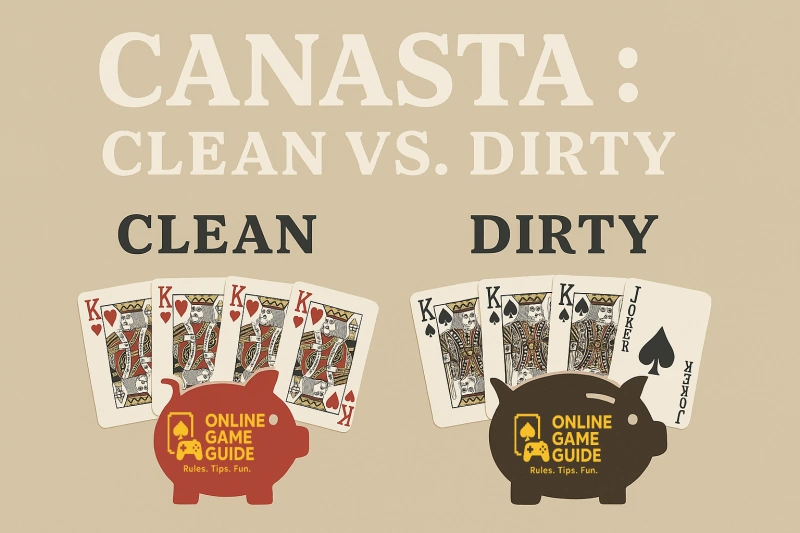
canasta: Clean vs. Dirty
At the heart of every Canasta match lies the ultimate goal: creating a canasta. But not all canasta are created equal. To truly play with skill — and score big — you’ll need to understand the difference between clean and dirty canasta. This distinction is more than cosmetic; it directly affects your score, strategy, and overall standing in the game. Let’s explore this core element of the canasta rules.
Types of canasta
- Clean Canasta: A meld of seven cards with no wild cards.
- Dirty Canasta: A meld of seven cards that includes at least one wild card.
Clean canasta score higher and offer prestige points (not to mention bragging rights). Dirty canasta are easier to form, thanks to the flexibility wild cards provide, but they award fewer points. These details are vital for understanding and applying standard canasta rules.
Clean Canasta: Pure Power
Clean canasta are composed entirely of natural cards — no jokers, no twos. They require patience and a bit of luck, as collecting seven of the same rank can take several turns. But the reward is worth it: a clean canasta scores 500 points, significantly more than its dirty counterpart.
Dirty Canasta: The Shortcut
While not as rewarding, a dirty canasta is much easier to create. Players can use wild cards (up to the maximum allowed) to complete a meld of seven. Dirty canasta are marked in black and score 300 points. Strategic players often build a dirty canasta early in the game to secure points, then focus on forming a clean one later for a stronger finish.
Strategic Considerations
Understanding when to go for a clean or dirty canasta is a matter of timing, card availability, and risk. If you're holding multiple wild cards and have already melded a few natural cards of the same rank, it might be wise to go for a quick dirty canasta. However, if you’re leading or aiming to go out strong, pushing for a clean canasta can make all the difference.
Regardless of your approach, the formation of canasta is central to winning and is carefully governed by official canasta rules. By mastering both clean and dirty canasta, you’ll elevate your gameplay, surprise your opponents, and consistently score higher.
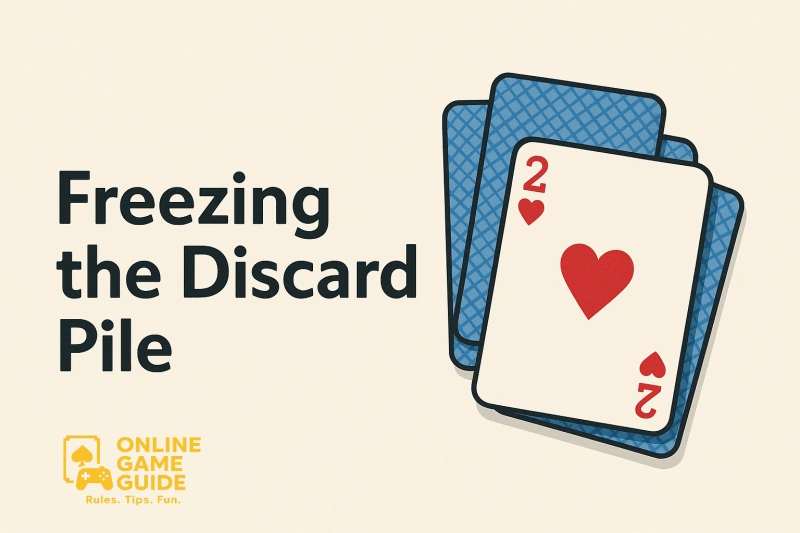
Freezing the Discard Pile
One of the more strategic and suspenseful elements of Canasta is the treatment of the discard pile. Unlike in simpler card games where the top discard is fair game, Canasta introduces the concept of a "frozen" discard pile — a mechanic that can protect your hand, stall your opponents, or set up powerful plays. Understanding how and when the pile is frozen is a crucial part of mastering the canasta rules.
What Does It Mean to Freeze the Discard Pile?
Freezing the discard pile means placing a restriction on when it can be picked up. When frozen, the discard pile is essentially “locked,” and only players who meet specific conditions can take it. This rule adds a defensive layer to the game, especially when a player suspects their opponent is collecting a specific rank.
How Does the Discard Pile Become Frozen?
There are two primary ways the discard pile becomes frozen:
- A wild card (2 or joker) is discarded — the pile is frozen for all players.
- A red three is turned face-up as the first card in the discard pile — the pile starts frozen.
Once frozen, a bright red alert is in effect. You’ll often see players place a red card sideways on the pile or use another visual cue to indicate its frozen status. According to canasta rules, this state remains until a valid pickup is performed under the special frozen-pile conditions.
Frozen vs. Regular Discard Pile
- Regular discard pile: Can be picked up if you can use the top card in a valid meld with one matching card from your hand.
- Frozen discard pile: Can only be picked up if you have two natural cards in your hand that match the top card.
When Can You Pick Up a Frozen Discard Pile?
Picking up a frozen discard pile is no easy feat. The conditions are stricter to ensure balance and to prevent early-game pile grabs. You must have two natural cards of the same rank as the top discard card — no wilds allowed — and you must immediately meld those cards with the top card of the pile. If you can't, you’re not allowed to take the pile, even if the rest of it holds treasures.
Strategic Benefits of Freezing
Freezing the discard pile is a powerful defensive move. By discarding a wild card when you suspect your opponent needs a certain rank, you can prevent them from accessing potentially valuable melds. Conversely, a well-timed unfreeze can flip the mome

Ending the Round and Scoring
In Canasta, knowing how to close a round is just as important as how you play it. Timing your exit, maximizing your melds, and avoiding penalties can dramatically influence your final score. Whether you’re leading or chasing points, understanding how rounds end and how scoring works is vital to mastering the canasta rules.
How to End a Round
A round in Canasta ends when one player (or team) goes out. This means they have no cards left in hand after fulfilling specific conditions. Going out isn’t as simple as discarding your last card — you must first complete at least one canasta before you’re allowed to go out.
Conditions for Going Out
According to standard canasta rules, a player may go out when:
- They have completed at least one canasta (clean or dirty).
- They have either melded all their cards or discarded their last card.
- In team games, they receive verbal or implied consent from their partner (if required).
Going out gives your team a bonus and ends the round immediately, forcing everyone to count their remaining cards — for better or worse.
Penalties and Deductions
Unfortunately, not all points are positive. If you’re caught with cards in your hand when an opponent goes out, you’ll lose those points. And if your team failed to complete a canasta, red threes count as negative points. These penalties can swing a game dramatically and are a critical part of canasta rules strategy.

Strategies and Tips for Mastering Canasta
While understanding the canasta rules is essential, true mastery comes from strategic play. Canasta is a thinking person’s game — a delicate blend of offense, defense, partnership, and perfect timing. Whether you’re brand new or already fluent in melds and discard tactics, these strategies and tips will sharpen your game and elevate your skills at the table.
For Beginners: Building a Strong Foundation
Starting out in Canasta can feel overwhelming with all the special cards, frozen piles, and scoring intricacies. But fear not — a few key habits will instantly improve your gameplay and help you get comfortable with the canasta rules.
Beginner Tips
- Don’t rush to meld: Holding your cards early on allows you to build stronger combinations and avoid tipping your hand to opponents.
- Watch the discard pile: Keep an eye on what others are throwing away — it reveals what they’re collecting and what you might want to block.
- Learn to freeze strategically: Use wild cards and black threes to lock the discard pile when it’s becoming too attractive to others.
- Aim for one canasta early: Securing a canasta gives you access to red three points and the opportunity to go out later.
Planning for the Long Game
Canasta is not a sprint — it’s a marathon of well-timed decisions. Don’t be afraid to pass on small melds early if it means securing a stronger position later. Remember, one clean canasta is worth more than two weak dirty ones.
Advanced Strategies: Play Like a Pro
Once you're confident with the canasta rules, it's time to think a few moves ahead. Advanced players treat Canasta as a game of psychological warfare, probability, and teamwork.
Advanced Tips
- Read your partner: Learn to predict your partner’s intentions based on their discards and melds. Silent synergy wins games.
- Bait your opponents: Occasionally discard cards you suspect they won’t use to test their reactions and break up their patterns.
- Track used wilds: Keep a mental count of jokers and twos already played — it tells you what’s still in circulation.
- Time your exit: Going out too early can rob your team of scoring opportunities. Make sure your partner is ready before you pull the trigger.
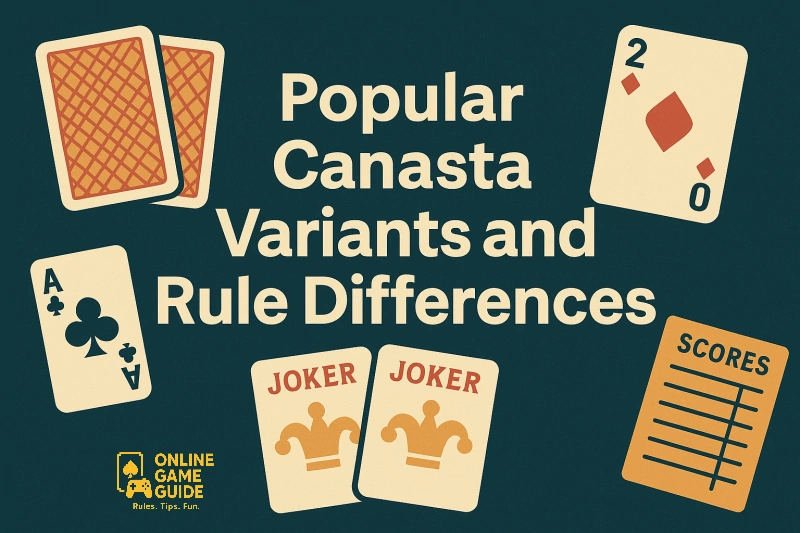
Popular Canasta Variants and Rule Differences
One of the reasons Canasta has remained popular for decades is its adaptability. While the core canasta rules provide the structure for the traditional game, many regional and house variations have emerged, each adding its own flavor. Whether you're playing with two people or a group of six, there's a version of Canasta to suit every table. Let’s explore the most popular variants and how their rules differ from the classic game.
Classic vs. American Canasta
Most players are familiar with the "Classic" Canasta, often called "Uruguayan" or "International" Canasta. However, in the United States, the game evolved into a distinct version with additional rules, more strategy layers, and extra spice. Understanding these variations is crucial for competitive play and social gaming alike.
Key Differences
- Card values: American Canasta often modifies the point values for melds and bonuses.
- Red threes: In American Canasta, red threes can become negative points if you haven’t completed a canasta.
- Minimum meld values: These tend to be higher in the American version, making early melds more difficult.
- Additional rules: American Canasta sometimes includes concealed hands (no melding until going out), special scoring categories, and even restrictions on going out.
Both versions follow standard canasta rules in structure but differ significantly in gameplay dynamics and scoring tempo.
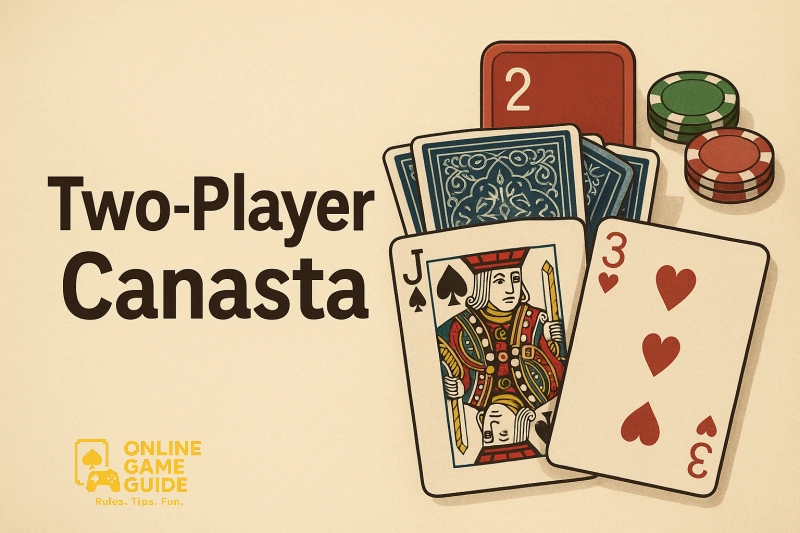
Two-Player Canasta
While Canasta shines in four-player partnerships, it adapts well for two players. In this variant, players receive more cards (typically 15 instead of 11), and play as individuals. The rules are mostly the same, but with extra emphasis on memory and hand management since you don’t have a partner to rely on.
Tips for Two-Player Games
With fewer players and more turns per round, discard strategy becomes even more critical. It’s also easier to track what cards your opponent might be collecting, which allows for more tactical blocking and freezing of the discard pile — a core element of competitive canasta rules.
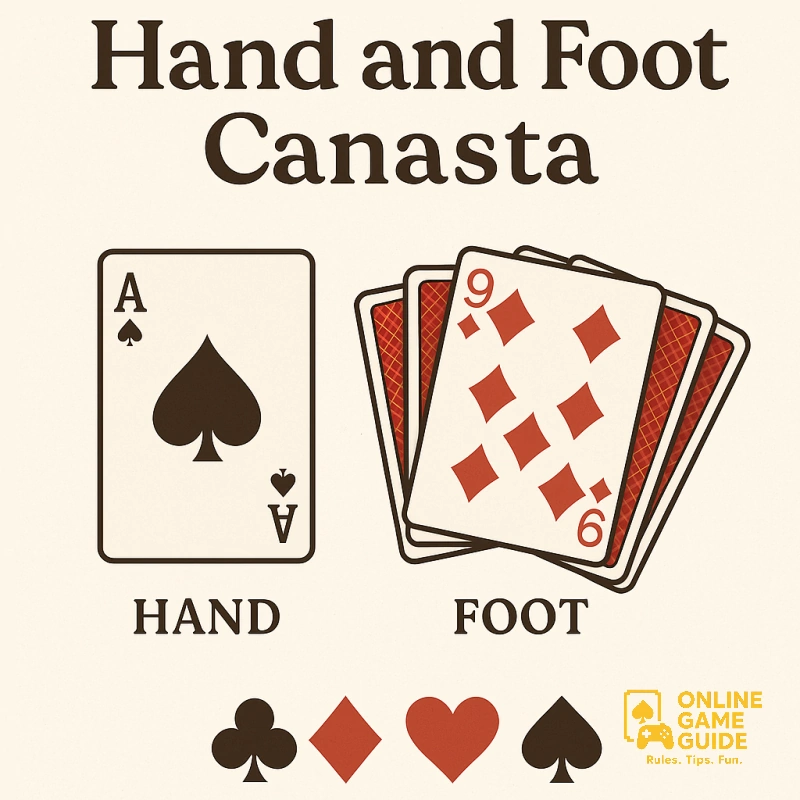
Hand and Foot Canasta
Hand and Foot is a wildly popular North American variation of Canasta. Each player is dealt two hands: a “hand” (used first) and a “foot” (used after the hand is played out). This version is especially popular in larger group settings and offers a longer, more casual style of play with huge point swings and plenty of laughter.
Unique Elements in Hand and Foot
- Two sets of cards: Players manage their hand first, then their foot.
- More cards: Often uses five or six decks for larger games.
- Multiple canasta required: Going out may require at least two or more canasta.
This version is beloved for its balance of chaos and control. While it still follows the skeleton of canasta rules, the added elements make it feel like a game of its own.
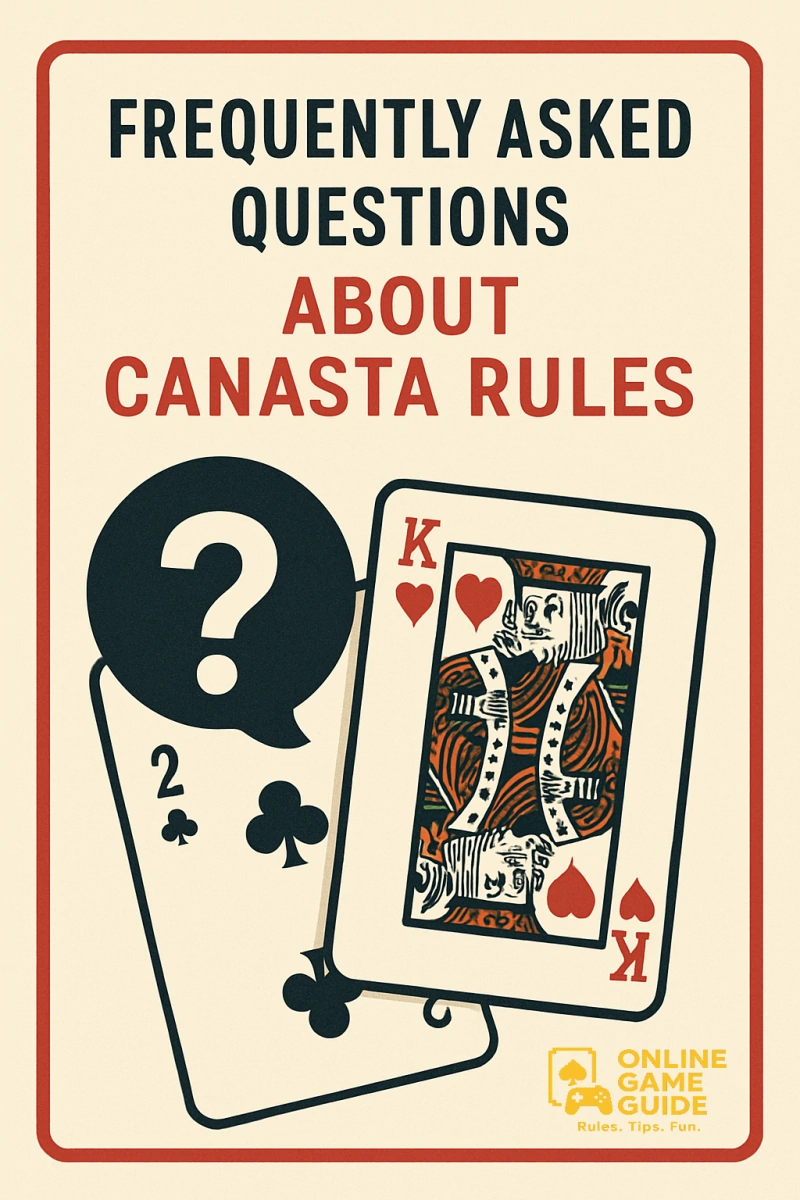
Frequently Asked Questions About Canasta Rules
Canasta is a game rich in history and strategy — and with that richness often comes confusion for newcomers. Whether you're just starting out or need a refresher on specific scenarios, this FAQ section is designed to answer the most common and important questions players ask.
We've compiled 10 concise questions and answers to clear up misunderstandings, highlight key strategic tips, and help you feel more confident at the table. Whether you're playing in person, online, or using a modern variant, this FAQ aims to be your quick-reference tool for smoother, smarter Canasta sessions.
Check other game like Garbage cards game